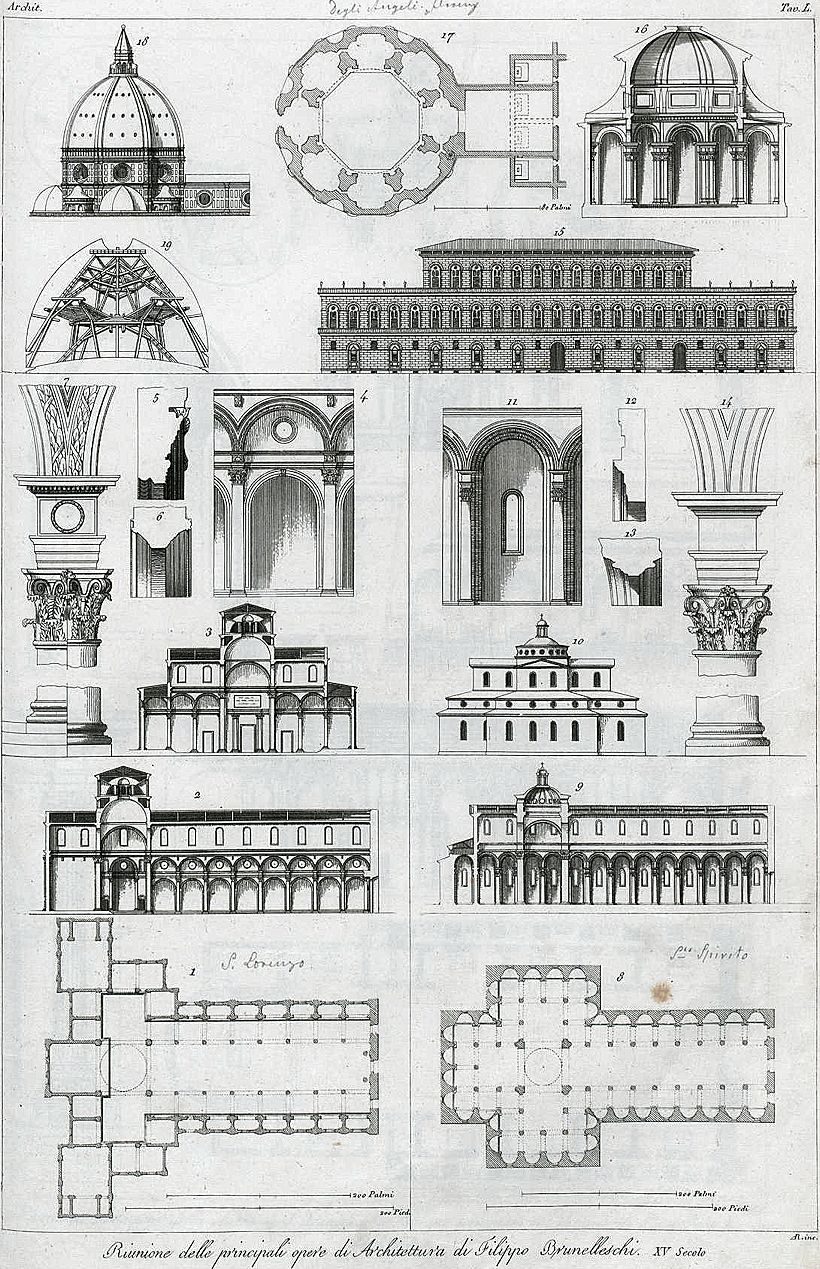1-7. Plan, section, and details of the Church of St. Laurence at Florence.
8-14. Plan, section, elevation, and details of the Church of the Holy Ghost at Florence, one of the last works of Brunelleschi.
15. Elevation of the fašade of the Pitti palace at Florence, one of the most imposing productions of the genius of Brunelleschi, who raised it to the entablature of the first story only; the second story was added by Ammanati, when Cosma I, who bought this palace of the Pitti family in 1549, entrusted to him the continuation of the works; it was at this period also that the windows with consoles and pediments were placed within the arcades of the ground floor.
16. Transverse section of the small temple in the gardens of the Monastery of Sta. Marie degli Angeli at Florence; this building, commenced by Brunelleschi for the family of the Scolari, was never finished, the want of money having arrested the construction at the height of about two-thirds of the order of the interior. The entire figure, as here given, is taken from an ancient drawing by Brunelleschi, still preserved in the monastery, which has been published with very judicious observations by M. Onofrio Boni. (Memorie per le belle arti; Roma, 1786, vol. ii, pl. 37.)
17. Plan of the above, octagonal within, and a figure of sixteen sides without, imagined by Brunelleschi no doubt to diminish the thinkness of the walls.
18. Elevation of the celebrated cupola of Sta. Maria delle Fiore cathedral of Florence, the most important of the works by Brunelleschi, and the last example of the employment of the pointed arch. Plan and section of this cupola are given pl. 67/16.
19. Scoffolding invented by Brunelleschi for the construction of the cupola of Sta. Maria delle Fiore, from the engraving which was given by the Senator Nelli. (Studio d' Architeturra civile; Firenze, 1755, in fol. fig., vol. iv, pl. viii, B.) It was constructed, according to Vasari, with a perfection unknown till that time, and with such solidity that the workmen were enabled to raise and work their materials with the same facility as if they had been up in terra firma.
| |

|
